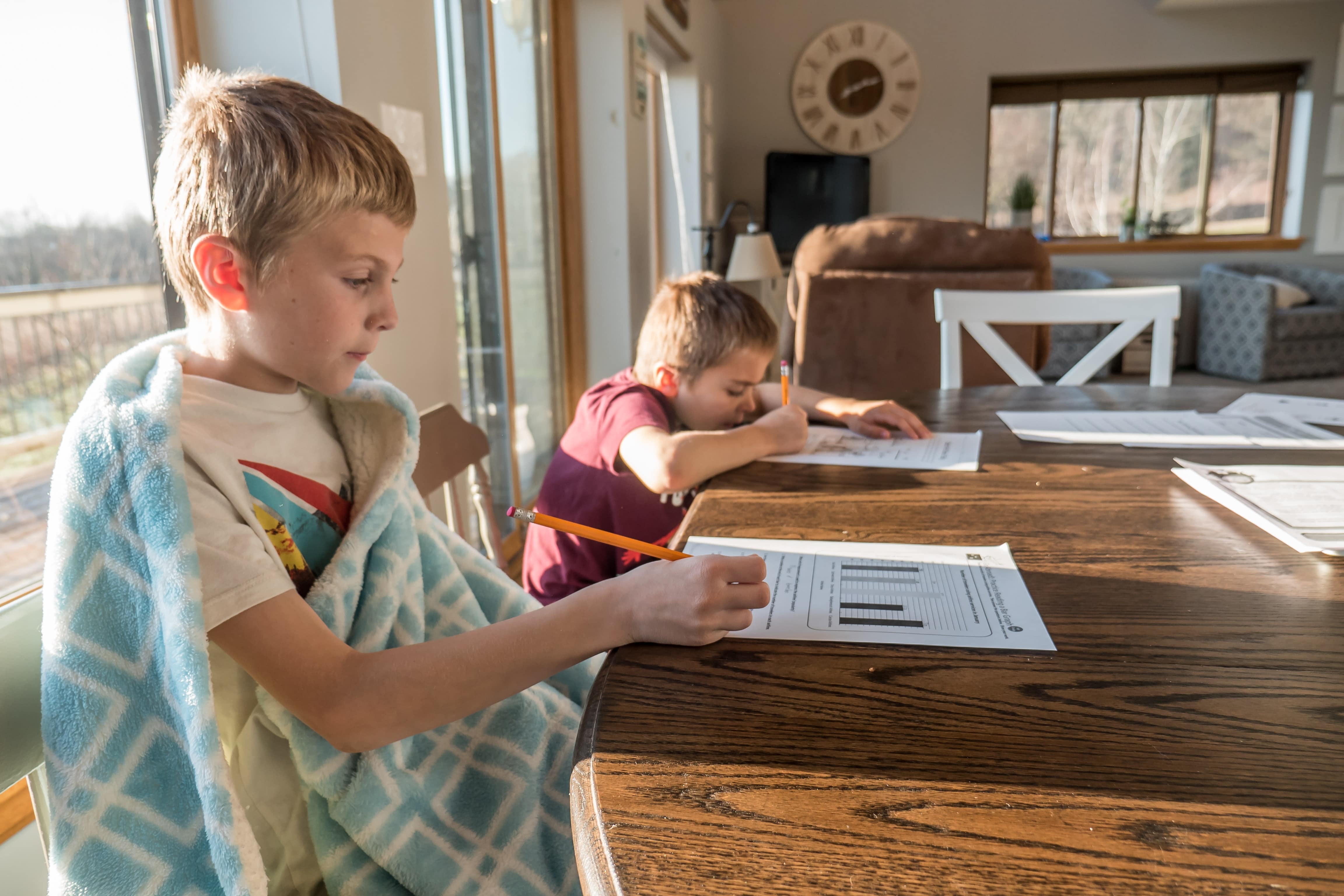How to Organize Time & Space During Remote Learning
In the spring, many parents found it challenging to organize their time and space during remote learning. Routine was completely altered and everyone was home trying to work.
My best advice for organizing your time during remote learning is to keep to a rhythm every day and every week that most closely aligns with your family’s natural rhythm. Children need order and predictability to feel safe and secure. Sticking to a rhythm means you can be intentional about what your priorities are. For instance, you can all have the same wake up time and the same sleep time. Or you can have one adult get up early and work 6am to noon so the other adult has time for him/herself and then dedicated time with the kids, and then switch. Whatever you choose, I recommend you follow your family’s natural rhythm and habits to make it as easy as possible.
Put this schedule on a white board. Block off times for work and school meetings first, then add in time blocks for exercising, eating, relaxing quietly, and fun (baking, games, swimming, crafts). When possible, add in extra “cushion time” for transitions that you know can sometimes be challenging, like leaving the house or getting ready for bed. The key is not the specific schedule, it’s just having one. You can flex as needed if something major comes up, but with this in place, all of you will know what your days will generally look like. Consider referencing homeschool scheduling suggestions for remote learning.
You can also create a task list for each child each day with categories like: Self (meditation, journaling, etc.), Exercise (biking, running, etc.), Chores, Learning, Music, Create, Connect (with someone outside of the house). Set minimum time limits for each. Have each child check off the tasks as they complete them in any order they want. This allows them autonomy and ownership. If you need assistance creating personalized task lists, we can help!
For organizing your space during remote learning, get creative with your workspaces. One mom said she found that an ironing board makes a great adjustable-height surface for laptops when working on the couch. A small rectangular folding table with adjustable height can also create a makeshift workspace. If separate rooms are not an option, give everyone headphones with mics. Make sure each child has essential tools at his/her space: device, pencils, paper, water, relevant assignments/books, etc. Having a dedicated and equipped workspace minimizes your kids’ reasons for interrupting you. And if your first attempt isn’t working, try another. Move from the kitchen counter to the couch, for instance. Keep experimenting until you find something that works.





